Carissa Green Reads
I read widely from many genres. Perhaps this blog will feature fewer ratings and reviews, but I certainly intend to write about my reading life - it's the subject I most find myself wanting to talk about.
Currently reading
The Other Americans: A Venn Diagram
Laila Lalami was supposed to visit our university in March; of course, the event was cancelled, as most things have been since that time. But in preparation, I read two of her novels.
The first, "The Moor's Account" is a tour-de-force historical epic framed from the point-of-view of the slave, who gets just a line in the official sixteenth century account. I was blown away.
The second, "The Other Americans," is a contemporary family story. With blurbs from J.M. Coetzee and Viet Thanh Nguyen, Lalami needs no additional praise from me.
But let me do this: I will draw you a Venn Diagram of the mind. In the intersection of a book like Tommy Orange's "There, There," in which each chapter switches to a different character's point-of-view to tell a part of the story, and a book like Jhumpa Lahiri's "The Namesake," which tells the story of an immigrant family's experiences building a life in the United States of our time, lives "The Other Americans."
Of course, "The Other Americans" is its own story. And "There, There" and "The Namesake" are just two examples of many that could work in this model. But they are the ones that came to mind. It's a fun exercise.
In the end, I recommend both of these Lalami books unreservedly. Try them. Expand your circles.
-cg
 3
3
Quick Takes: King Charles III
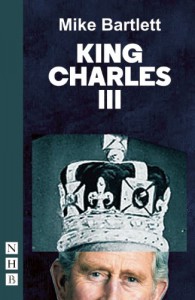
For someone who is a royal-watcher (guilty) and who reads far more plays than she actually gets to see performed (also guilty), "King Charles III" is not a perfect manuscript.
But this post is not about those perceived flaws.
I'm here to tell you I had three different experiences of this play:
1. Reading it before the airing of telefilm on PBS's "Masterpiece" series.
2. Seeing the telefilm referenced above.
3. Reading it AFTER the "Sussex Exit" from official duties of the BRF.
(NOTE: This play was written and originally performed years before Harry met Meghan. The Jess character is nothing like MM. Bartlett is not a soothsayer, and his view of these characters is not truth but conjecture. However, none of these facts make drawing connections or parallels any less satisfying or fun . . . )
-cg
 5
5
Notes on Adaptation: Caging Skies
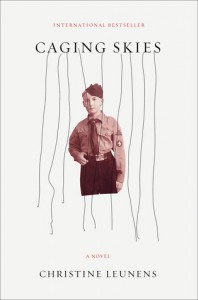
This is really the Tale of Two Tales, with the shadow of a third lingering behind.
Christine Leunens' "Caging Skies" is the novel from which Taika Waititi adapted his screenplay for "JoJo Rabbit" . . . and, if someone didn't tell you that fact, you may never guess. Yes, a little Viennese boy named Johannes is a Hitler Youth true-believer. Yes, his mother is secretly working with underground dissidents. Yes, a friend of Johannes' deceased sister is hiding in the family's attic.
But is this novel a comedy about a little boy whose imaginary friend is Adolph Hitler? Does it make you laugh at evil and cry for the naiveté of youth? Not even a little bit. This novel owes far more to Kafka's "Metamorphosis" than to Mel Brooks any day.
Although the first part of the novel IS about a boy who resembles Waititi's JoJo, most of it is not. After JoJo is wounded, he turns surly and loses all humor. The novel becomes the story of a teenage boy -- and then a 20-something young man -- who falls in love with the young woman hidden in his home. As he loses all of his family, he bonds with the woman and keeps her tied to him, a prisoner of dependency and lies, for the rest of the war and more than a few years after.
Interestingly, though, one motif the novel and film share is that of dancing -- to eerie effect. Through the novel, you can also follow motifs and symbolism of snails, caged birds, decaying houses, and bedridden people.
So there is Leunens' "Caging Skies." And there is Waititi's "JoJo Rabbit." But I think there is easily another story here to be told: Elsa's story from her own point-of-view. How did she survive, and how badly did her experience affect her mind? "Caging Skies" is entirely from Johannes' point-of-view, so the damage to Elsa is very hard to discern. But it is certainly there. And the potential is fascinating.
Read it. Consider it.
-cg
 5
5
Ham and Onion Detective Agency
Some weeks ago, I had the occasion to re-read a childhood classic, "Harriet the Spy." Forty-ish years after my first reading, I had completely forgotten that Harriet was assigned, against her oh-so-strong will, the role of an onion in her school Christmas pageant.
Meanwhile, as we all recall, in "To Kill a Mockingbird," Miss Scout Finch plays a ham in her school's pageant, down in Maycomb, Alabama.
Ham and onion, the meat and flavor that made us laugh and feel and think through our childhoods.
It seems to me that Scout and Harriet might have been kindred spirits. Perhaps they would have started a detective agency, specializing in examining all of the unusual characters in their general vicinity.
Ham and Onion Private Eyes: The adult novel we never had but we may, possibly, desperately need.
-cg
 4
4
The Sorting Hat Dilemma

By now, it's canon that the Sorting Hat takes into account the desires of the student -- to an extent -- along with other factors. That's why there are some really glaring mis-matches in the Potterverse.
Hermione: Totally a Ravenclaw.
Snape: Could easily have been Gryffindor.
Clearly, family history also plays into the equation. There's no way Hufflepuff-like Ron Weasley nor Huffle-claw (or Raven-puff) Neville Longbottom should be in Gryffindor, except for family legacy.
Which brings us to the wonderful Scorpius Malfoy. Is there any character in the Potterverse who so nicely embodies qualities of all four houses? He is the clever scholar of Ravenclaw. He is the quiet, hard-working Hufflepuff. He is as brave as any Gryffindor. And he values his family connection to Slytherin.
I know that "Harry Potter and the Cursed Child" is supposed to be Albus Severus' and Harry's story, with Scorpius and Draco merely their "doubles," but I must say, Scorpius is the best character. Without him, Albus would be insufferable, and I would not have enjoyed reading the play nearly so much.
-cg
 2
2
Try to Keep Up . . .
Okay, we all understand that genre fiction is so pleasurable because writers take a relatively set structure and group of accepted conventions and make new stories out of them again and again. Here's a chain of books that have some very specific details in common:
1. Julia Quinn's "A Night Like This" is a book that uses the "Lady hiding from her dangerous past by working as a governess" plot. The female hero's "governess name" is Anne Wynter.
2. Lisa Kleypas' "Married by Morning" is also a "Lady hiding from her dangerous past by working as a governess" book.
3. Christina Dodd's "Rules of Surrender" is part of the author's "governess" series. Its plot is focused on "taming the wild male hero," rather than female hero in jeopardy, but the hero's name is . . . Lord Wynter. This Lord Wynter ran off to the Middle East and lived among the people there for a long while then comes back to England to wreak havoc on everyone's ideas of "convention."
4. Laura Kinsale's book "The Dream Hunter," (the best one on this list) also features a hero who lived in a Middle-eastern culture, specifically among the Bedouin, then comes back to England and faces his "adjustment." His name: Lord Winter.
So there you go. Random details among the genre, lined up in a neat little row.
-cg
 1
1
Sometimes, you just know . . .

Sometimes, I have to think for a while -- or a long while -- about how I would "rate" a book. And sometimes, I just know as soon as I close the cover.
Today was one of those days. This "graphic history" hit my emotional, intellectual, and artistic buttons in all the right ways, and as soon as I closed the back cover, I knew: Five stars.
Highly recommend. Read it all in one sitting, for best effect. My time was about 1:45, so if you have time for a movie, you have time for this one.
-cg
 1
1
It moved me . . .
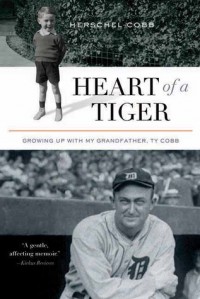
This memoir touched my heart. Yes, Herschel Cobb is probably idolizing his famous grandfather, but so what -- I idolize my beloved, late grandparents a bit, too.
Was the famously irascible Ty Cobb the old pussycat his grandson makes him out to be? Perhaps not. But for a few weeks, over the course of a few years, he was the child's life-line, as the boy suffered through physical and emotional abuse, as well as neglect from his parents. The elder Cobb was the man young Herschel needed in his life to survive, and probably saved him from turning into a violent or despairing man himself.
So the story moved me. It was horrifying to realize that a child who came from a family with means could be just as badly abused--terrorized really--as a poor child. And he needed the love and support he received from his grandfather (as well as various aunts and his grandmother) as desperately as any child.
It also makes me aware that some children never find their lifeline -- they survive by their own wits. Or the cycle doesn't break. So yes, it's the overlay of this being a "famous family," that drew me in to the memoir, but in the end, that mattered far less than the human connection told of within. Does it matter that it was a story about Ty Cobb? Not as much as it mattered that the boy, Herschel, survived.
-cg
 1
1
A different type of reading problem

Laura Moriarty's "The Chaperone" is the story of Cora, a Wichita, Kansas matron who volunteers to chaperone teenaged Louise Brooks for a summer in New York City, and the reverberations of the journey change her life forever. (Sounds like a good blurb for a movie, doesn't it? Guess why I picked up this book . . . )
I really enjoyed the novel, but it had a flaw that, although not deal-breaking, was distracting, to be honest. The typesetting on the novel was just strangely done. Of course, we all know that the space between words and sentences, and even individual letters in a manuscript is variable. When typesetting was a hand-done art, craftspersons did this work to the best of their human eyes.
Now that these things are computerized, I do not necessarily expect "better," for art is subjective, but I do expect that it will not be noticeable. In "The Chaperone," there were many places where it seemed there was almost NO space between words -- often between sentences. And this wasn't a "fit it on the line thing"; sometimes this even happened on short lines, where another five words would have fit perfectly well.
It was just weird, and a big quality control fail, in my opinion, for Riverhead Books (a Penguin imprint).
-cg
 3
3
Quick Take: The Middle Child

Oh, Geoffrey.
The poor, put-upon Duke of Brittany is one of my favorite middle children in all of literature.
Over-thinker, unlucky pawn, forever to be disappointed, but how hard he tries, how passionately he rages . . .
-cg
The Novelist as Soothsayer

Gary Shteyngart is getting plenty of good attention this spring for his new novel, "Lake Success." But remember this one, from 2010, "Super Sad True Love Story?"
This novel was a comedic take on an alternate near-future world, in which people eschew face-to-face interaction in favor of communicating on personal electronic devices (apparats, with umlauts over all three as, if you please). People become "media" stars, making their living by broadcasting themselves doing pretty much anything online. The United States' economy is collapsing, and society is at the mercy of money or resource-holding countries such as Norway and China.
Here's one detail that didn't strike me as so prescient when I first read the novel but now is screaming out at me: The U.S., in this novel, has a broken government and is losing an ill-advised, unpopular war in -- wait for it -- Venezuela.
Let's not go there.
-cg
 3
3
Anthology Analysis: Donald Hall's Contemporary American Poetry
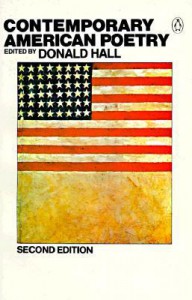
The first "new" book of poetry I read this year was Donald Hall's "Contemporary American Poetry," acquired last fall for a quarter at a garage sale. (Read more about that "haul" here: http://carissagreen50.booklikes.com/post/1838747/book-haul-summer-turns-into-fall.)
The volume is stuffed with canonical poets of the mid-20th century - 39 in total. And, in the Preface to the Second Edition, Hall curiously brags that he included two black poets. Further:
"A few years ago, Karl Shapiro made some remarks about lily-white anthologies which made me angry, for the usual reason one gets angry: because the remarks were accurate. A world of black poetry exists in America alongside the world of white poetry, exactly alike in structure -- with its own publishers, bookstores, magazines, editors, theologists, conferences, poetry readings -- and almost entirely invisible to the white world. Like the rest of the black world. The world of white poetry has practiced the usual genteel apartheid of tokenism: Here is praise for Langston Hughes, here is Pulitzer Prize for Gwendolyn Brooks; now we've done our liberal bit, let's go back to reading "The New York View of Books.
"The world of black poetry seems to be thriving. I find it hard to judge these poems, as if I were trying to exercise my taste in a foreign language, which I am. Here I am printing two poets almost wholly unknown to the white world, Dudley Randall and Etheridge Knight. (I asked LeRoi Jones, who refused.)"
Fifty years later, of course, no liberal thinker would talk thusly about the literary world, so perhaps it is unfair to point out the recently-deceased Mr. Hall's cloddishness here. But man of our our African-American literati would say that there world is not yet fully fair to the merits of their works.
But, truth be told, just as depressing to me as the lack of writers of color in this anthology was the lack of women writers. Four, are included, all canonical: Levertov, Plath, Rich, and Sexton. Four. Four. Four. Ten percent. Not even Elizabeth Bishop made the list. Where are the women poets? They were writing.
In our post Gilbert-and-Gubar world, it's clear that who does the choosing and who is chosen matters. We can look back retrospectively and forgive, but we must not forget, going forward.
-cg
 2
2
Quick Take: The Aftermath

Without being too spoiler-y . . .
At one point in this novel, the german architect, Lubert, tells the British boy, Edmund, that Edmund's mother, Rachael, reminds him of the actress Vivien Leigh. Lubert also says his wife loved the book and movie "Gone With the Wind," in which, of course, Miss Leigh played the infamous Scarlett O'Hara.
This comparison is more than a throwaway detail. Rachael and Scarlett are both navigating their way through the rebuilding period immediately after a devastating war.
Scarlett is putting her life back together, materially, working hard to ensure she and those she loves survive, concentrating on rebuilding their physical lives.
Rachael is doing survival work Scarlett doesn't seem to have time to face: She is trying to put herself back together emotionally.
"The Aftermath" is its own thing - certainly not a re-telling of the earlier book - but it's nice to recognize themes that cross cultures and times.
-cg
 2
2
Books in the Family
I always intended to read Nic Sheff's memoir, "Tweak," and his father, David Sheff's memoir, "Beautiful Boy," consecutively, and close together.
Around the time they were published, father-and-son did press together. I remember them on at least one of my favorite Public Radio shows - "Studio 360," or "Fresh Air," or "To the Best of Our Knowledge," probably, or maybe more than one of them. Their stories were so intimately intwined it just seemed like the right reading choice.
I completely recommend this method for reading these books. One story informs the other. Emotion is heightened through both books. It's quite an intense experience.
It's also kind of a fun little puzzle, matching up parallel scenes and characters between the two books, where names and details are changed a bit, for reasons, I'm sure. Even the acknowledgement pages have some interest. Both Sheffs thank "Armistead." How many "Armisteads" could there be in the greater Bay area? Has to be Armistead Maupin, right? And is this also Nic's honorary godfather? They don't say. Some little mysteries are even a bit more delicious when they aren't solved.
However, there is one mystery I that I do not understand and wish I did: The mystery of the publishing world. Nic Sheff's book is published under the Ginee Seo imprint of Atheneum Books for Young Readers. I suppose it's fine for an older teen to read this book, but as it covers basically Nic Sheff's 19th through 22nd years, with extremely frank descriptions of drug use, sex, and violence, nothing about this says YA to me. Luck of the publishing draw? I guess.
-cg
 3
3
Rethinking . . .

I got "Dumplin'" from my local public library recently because people raved about how fun both the book and the TV movie were. And I always read the book first . . .
Yes, the novel was quite fun. But it was also a bit disappointing, because the characters were all (or mostly) just a little bit too good to be true. And I think I'm not in a personal place right now to be much enchanted by a novel that is about not much more than the social problems of American (Texan, even!) teenagers. I've got my own problems and am pretty "over it."
But I saw Murphy's follow-up, "Puddin," in the Target yesterday, and I couldn't resist - I read the flap copy.
It's a sequel.
It's a sequel featuring the relentlessly optimistic, probably clueless, sweet, overprotected, chubby girl and bullying target, Millie. It also features the one character in "Dumplin'" I pretty much loathed, the one-dimensional bitch, Callie (who, apparently, gets a last name in the sequel).
A book for Millie. That, I might have to read.
-cg
 4
4
In Praise of the Misanthrope . . .
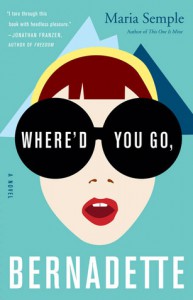
You know when I decided I loved Bernadette? Page 10:
"The only way to get to Antarctica is by cruise ship. Even the smallest one has 150 passengers, which translates into me being trapped with 149 other people who will uniquely annoy the hell out of me with their rudeness, waste, idiotic questions, incessant yammering, creepy food requests, boring small talk, etc. Or worse, they might turn their curiosity toward me, and expect pleasantry in return. I'm getting a panic attack just thinking about it. A little social anxiety never hurt anyone, am I right?"
Yep. Page 10. I love her.
-cg
 4
4




















